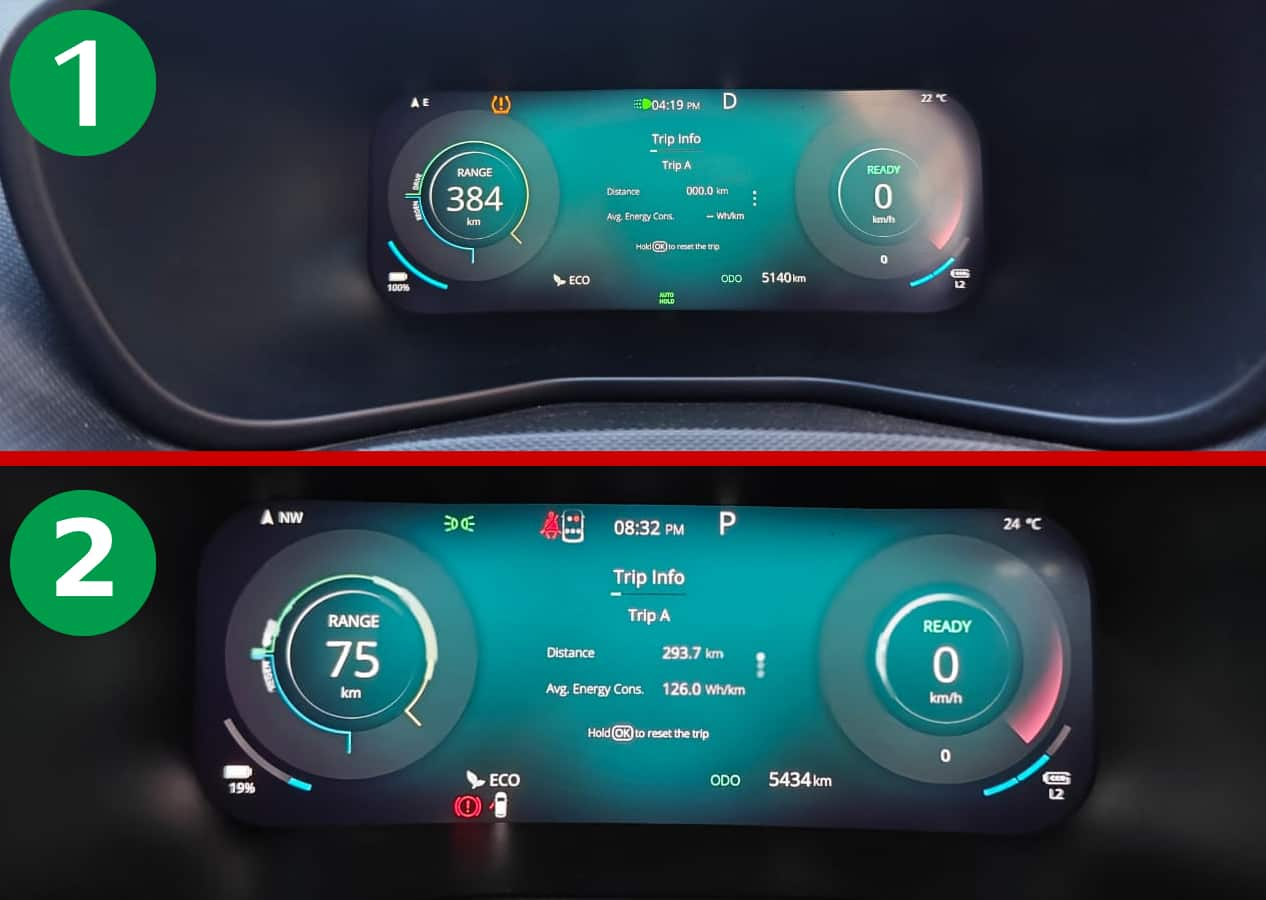Tata Nexon EV Real World Range Test: Did It Live Up To Expectations? Check Details
Tata Nexon EV: The Tata Nexon EV, one of the best-selling electric SUVs in India, is priced between Rs 12.49 Lakh and Rs 17.19 Lakh, ex-showroom.
Trending Photos
)
Tata Nexon EV Range Test: The Tata Nexon EV, one of the best-selling electric SUVs in India, is priced between Rs 12.49 Lakh and Rs 17.19 Lakh, ex-showroom. It comes with two battery pack options: 30 kWh and 45 kWh, offering a claimed range of 325 km and 489 km respectively. However, real-world conditions affect an EV’s range. Therefore, to test it, I (Lakshya Rana) took a 45 kWh variant of Nexon EV out for a spin and conducted a real-world range test.
Test Conditions And Setup
The car was fully charged using a 7.3 kWh AC charger before the test. Since it was winter, the AC remained off to optimize energy consumption. I drove in Eco mode for maximum efficiency. The car was loaded with four passengers, with a total weight of around 270-280 kg.
The route covered different types of roads:
-- 200 km on a national highway (average cruising speed 90-110 km/h).
-- 60 km on a state highway (average cruising speed 40-60 km/h).
-- Rest in rural areas (average cruising speed 20-30 km/h).

Battery And Range
At the start, the instrument cluster showed a projected 384 km range (as seen in photo 1). At the end of the test, the remaining projected range dropped to 75 km with 19% battery left (seen in photo 2). The car covered 293.7 km in total using 81% battery with an average energy consumption of 126 Wh/km.
If we account for the remaining 19% battery as per the given performance, the estimated real-world range would be around 360-380 km on a full charge. This is lower than the claimed 489 km range, but still practical for everyday use.
Key Observations
High-Speed Impact On Range: A large portion of the drive (200 km) was on the national highway at high speeds (90-110 km/h). If it had been driven at lower speeds, the range could have been higher as the higher speed drains the battery faster.
Mixed-Terrain Efficiency: On state highways (40-60 km/h) and rural roads (20-30 km/h), energy consumption was more efficient as some amount of power was recovered through the car’s regenerative braking. This suggests that city driving would provide a better range.
Effect Of Load On Range: The car was carrying four passengers, which added extra weight, and slightly affected efficiency. A lighter load could have improved the range by reducing energy consumption.
Verdict
It performed well in real-world driving conditions. While the claimed 489 km range was not achieved, a real-world range of 360-380 km is sufficient for most users. In city conditions, the range is expected to be higher due to lower speeds and better energy recovery.
Stay informed on all the latest news, real-time breaking news updates, and follow all the important headlines in india news and world News on Zee News.
Live Tv







)
)
)
)
)
)
)
)
)
)
